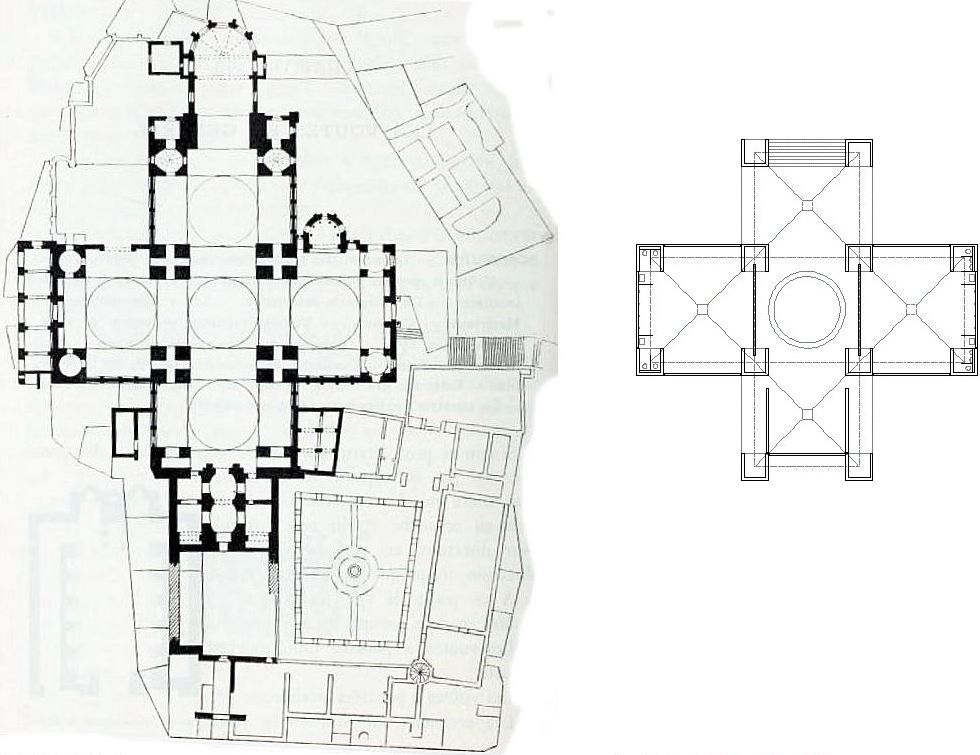Éléments et Théorie de l'Architecture
To begin to understand Kahn requires a major intellectual effort, and indeed it ultimately involves the rewriting of contemporary architectural history. A generation brought up on Hitchcock and Johnson International Style, of 1932, or even Giedion's Space, Time and Architecture, of 1941, could hardly hope to perceive Kahn's quality at once. Nor could he, more importantly, have been able to find himself easily in it. From this observation, one of the major factors contributing to Kahn's lack of significant production during the thirties and forties comes to light. Kahn was, in large part, a part of that academic education, centered upon the French École des Beaux-Arts and called in America, generically, Beaux-Arts, whose later phases many historians of modern architecture, including myself, had so long regarded as bankrupt of ideas. In a formal, symbolic, and sociological sense the Beaux-Arts probably was bankrupt by the early 20th century, not least in the 1920's in America. But the researches of Banham and, more recently, of Stern, now force us to recognize the tenacious solidity of much of its academic theory, as distilled from Viollet-le-Duc and others by Choisy, Guadet, and Moore.
In 1920, however, the Architecture School of the University of Pennsylvania was conceded to be the most successful Beaux-Arts institution in the country. Its guiding light was Paul P. Cret, who had trained at the French École and settled in Philadelphia in 1905. Kahn has always regarded Cret as his master. "I had good teachers," he has said, and, like Cret, the young Kahn did not regard himself as a revolutionary. As a dutiful student he traced and adapted forms from the archetypal academic books: Letarouilly, D'Espouy, Guadet. Underneath such direct eclecticism, the history and theory of architecture were taught more or less after the method of Choisy.
Vincent Scully, Jr., Louis I. Kahn (New York: George Brazillier, 1962).
There is a historical aspect to Kahn's concern for composition. Composition of elements was a preoccupation of the Beaux-Arts academic tradition at the turn of the century. Julien Guadet, the respected professor at the Ecole des Beaux-Arts, wrote about it, and his famous pupil, Tony Garnier, may have set in motion forces and attitudes which, no matter how well disguised by subsequent events in architecture, may still be with us. This may explain the association which Kahn is supposed to have with the Beaux-Arts academic tradition. However, it was Auguste Choisy, a contemporary as well as an ideological antagonist of Guadet, who influenced Kahn more--not by his words and ideas (Kahn did not read French and was not a "reader" in the scholarly sense) but by the magnificent illustrations in his book Histoire de l'Architecture, which Kahn treasured.
Romaldo Giurgola and Jaimini Mehta, Louis I. Kahn (Boulder, CO: Westview Press, 1975), p. 184.
Naturally, his thinking has foundations in architectural history. As Joseph Esherick sees it, "There is a moral injunction and an ethical character about Kahn's pronouncements. It is familiar in the writings of Julien Guadet, whose Éléments et Théorie de l'Architecture in four volumes (1870-1880) posits that the elements of architecture are not the ancient orders but they are windows, walls, floors, and light. The idea that a wall wants to be a wall and the idea of master spaces and slave spaces are both in Guadet. I remember," Esherick adds, "that the prominent thing on Kahn's desk when I first went to meet him in the late 50s was a copy of Guadet's old testament."
C. Ray Smith, Supermannerism: New Attitudes in Post-Modern Architecture (1977), p. 82-3.
2007.02.28 12:10
Theory Part II - Doing What I Said I Would Do...
Does Goldhagen mention Piranesi's Campo Marzio hanging over Kahn's office desk or the Guadet volumes on the desk?
Naturally, his thinking has foundations in architectural history. As Joseph Esherick sees it, "There is a moral injunction and an ethical character about Kahn's pronouncements. It is familiar in the writings of Julien Guadet, whose Éléments et Théorie de l'Architecture in four volumes (1870-1880) posits that the elements of architecture are not the ancient orders but they are windows, walls, floors, and light. The idea that a wall wants to be a wall and the idea of master spaces and slave spaces are both in Guadet. I remember," Esherick adds, "that the prominent thing on Kahn's desk when I first went to meet him in the late 50s was a copy of Guadet's old testament."
--C. Ray Smith, Supermannerism: New Attitudes in Post-Modern Architecture (1977), p. 82-3.
note to self: Kahn reenacts both Piranesi and Guadet.
| |

Plan de Saint-Front de Perigueux
Éléments et Théorie de l'Architecture vol.1 p.548
| |
Plan of Trenton Jewish Community Center Bathhouse
|
|
